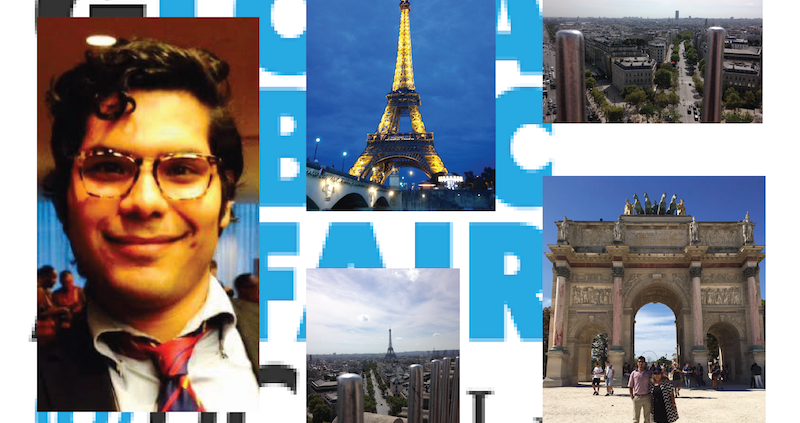The (Media)m is the Message
By Victor Ansley, MURP ’17
Heading into the home stretch of winter quarter of my final year as a MURP, I have recently spent some time reflecting on my experience at Luskin after spending the previous quarter participating in the inaugural Sciences Po-UCLA Masters exchange. Engrossed with Parisian academic and social life, I wrote on the structure and intention of the exchange and my experiences in my last blog for GPA.
In speaking with prospective students about the experience, it often feels as though no matter how accurately I try to describe my experience at SciencesPo or compare a quarter in Paris with a quarter in LA, it always feels inadequate. Whether I’m comparing my view of the different academic focuses, pedagogical orientation, even the pattern of socializing—I can never fully relate the experience. Yet I have also noticed that in my courses and analytical work, differences emerge—my process for reading and apprehending research is different, my analysis feels richer with new theoretical references. I have realized that what I benefitted most from in Paris was not so much the different contexts of academic life, but the different mediums and methods used to interpret research and life. French is a different medium than English, and it changes more how you look at something as opposed to what you look towards. As Urban Planning students, what mediums and methods do we use to interpret our discipline and context? How do we know what we know?
These questions have been central to me as I work through year 2. Through immersion in Governing the Large Metropolis (GLM’s) Governance approach and methodology at the scale of the Large Metropolis, I feel to have gained a suite of refractory methods that allow me as a planner to arrive at stronger empirical and analytical assessments, similar to how a prism refracts light into ultraviolet variations. Reading entails interpreting the design of research instead of just comprehending content. Institutions, Infrastructure networks, Development Policy, Urban Clientelism, Conflicts and Ungoverned Urban areas collectively refract often-illusory urban change narratives, and provide nuances to the Metropolis. In the kaleidoscope of noise, how do our Planning methods serve to frame the right conversations with communities? At a finer scale, GLM’s focus on Comparative Urban Sociology provides windows to the multiplicities present in the democratic production of knowledge across relational and topological landscapes. This knowledge breathes through communities and carries potentialities that David Harvey might call the “poetry of urban futures”. I have noticed that regarding the circumstances that surround the production of knowledge as important if not more than what the research argues. A little like the handle of our coffee mug, how we structure research not only frames understandings; it mediates entry into dynamic political-economic processes that impact urban and human places. Beyond the ivory tower of academia, societies surge and convulse with conflict and politics, and framing conversations is central to citizens as well. In our current political landscape, questions seem to surround the mediums of the media itself- fake news, leaks, “dossiers”, at times it feels as planners we face a “post-truth” context. In such a context, our mediums of interpretation should lead by example, and reflect knowledge that contributes and preserves our communities, and in this respect I feel the methodological terrain of SciencesPo ‘s GLM is invaluable.




